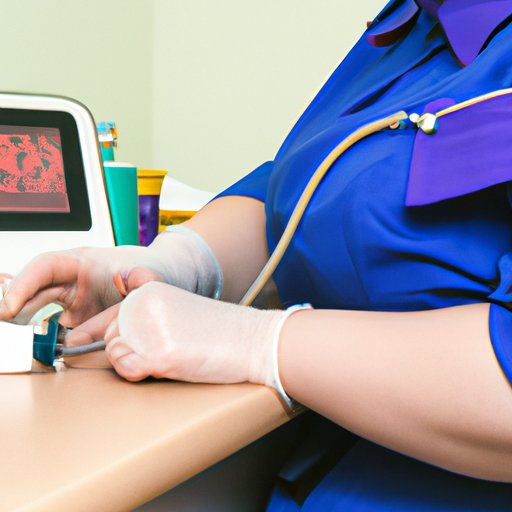
I. Introduction
When it comes to heart health, early diagnosis and timely treatment are crucial. One tool that doctors use to diagnose and treat heart conditions is cardiac catheterization. This procedure may sound intimidating, but it is essential for those with heart conditions.
II. What is Cardiac Catheterization?
Cardiac catheterization is a medical procedure used to diagnose and treat heart conditions. A catheter, a thin, flexible tube, is inserted into a blood vessel in the groin, neck, or arm, and then guided to the heart. The catheter allows the doctor to monitor the heart’s function, check for blockages in the arteries, and perform other diagnostic tests.
Cardiac catheterization is performed under local anesthesia, meaning the patient is awake, but the procedure site is numbed. Patients may also be given a light sedative to relax them.
III. Types of Cardiac Catheterization Procedures
There are three types of cardiac catheterization procedures: coronary angiography, left heart catheterization, and right heart catheterization.
Coronary Angiography: This procedure is used to identify blockages in the coronary arteries. A dye is injected through the catheter and into the arteries, which shows up on x-rays and allows the doctor to see any blockages.
Left Heart Catheterization: This procedure is used to assess the function of the left side of the heart. The catheter is guided through the aorta and into the left ventricle.
Right Heart Catheterization: This procedure is used to assess the function of the right side of the heart. The catheter is guided through a vein in the leg and into the right side of the heart.
IV. Risks and Benefits of Cardiac Catheterization
As with any medical procedure, there are potential risks associated with cardiac catheterization. The most common risks include bleeding, infection, and radiation exposure. However, the benefits of cardiac catheterization far outweigh the risks. The procedure is high-yield in diagnosing and treating heart conditions and can provide quick and accurate results.
V. Preparation and Recovery Process
The preparation process for cardiac catheterization will vary depending on the individual and the type of procedure being performed. Patients will receive detailed instructions from their healthcare provider on how to prepare for the procedure. There may be certain dietary or medication restrictions that must be followed before the procedure.
After the procedure, patients will be monitored for up to a few hours. Light sedation may make them feel drowsy and unsteady, which is why it’s important to have someone who can take them home. Patients should follow their doctor’s instructions carefully to ensure a smooth recovery. They may be advised to avoid strenuous activities for a few days while their body recovers.
VI. Who is a Good Candidate for Cardiac Catheterization?
Cardiac catheterization is most often recommended for patients with chest pain, shortness of breath, or other unexplained symptoms of heart disease. It may also be recommended for patients who have had a heart attack or have already been diagnosed with heart disease.
Physicians will determine if a patient is a good candidate for cardiac catheterization based on their medical history, symptoms, and the results of other diagnostic tests.
VII. Alternative Procedures to Cardiac Catheterization
While cardiac catheterization is an excellent tool for diagnosing and treating heart conditions, there are non-invasive alternatives that may be recommended in some cases.
Stress Testing: This procedure evaluates how the heart performs during physical exertion, such as on a treadmill or stationary bike.
Echocardiography: This procedure uses sound waves to evaluate the heart’s function and identify any abnormalities.
VIII. Conclusion
Cardiac catheterization is an essential tool for diagnosing and treating heart conditions. Patients should discuss the procedure with their healthcare provider and carefully follow instructions to ensure a smooth recovery. Early diagnosis and timely treatment are crucial for a healthy heart, so patients should not hesitate to seek medical attention if they experience any symptoms of heart disease.





